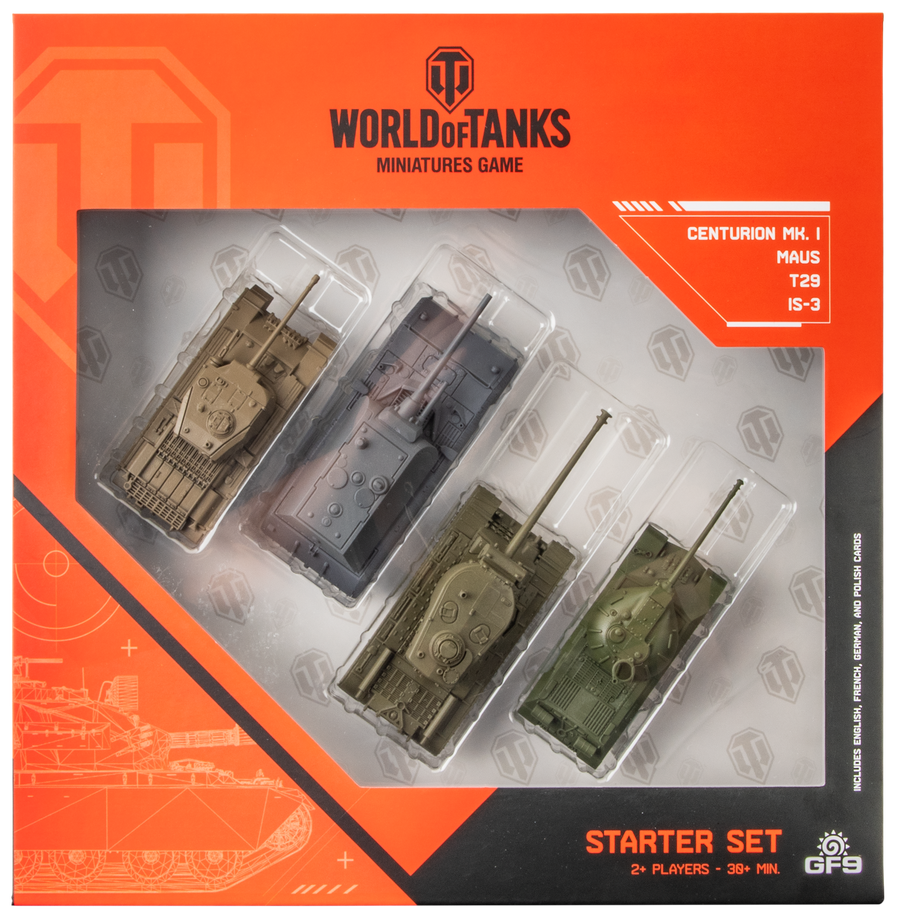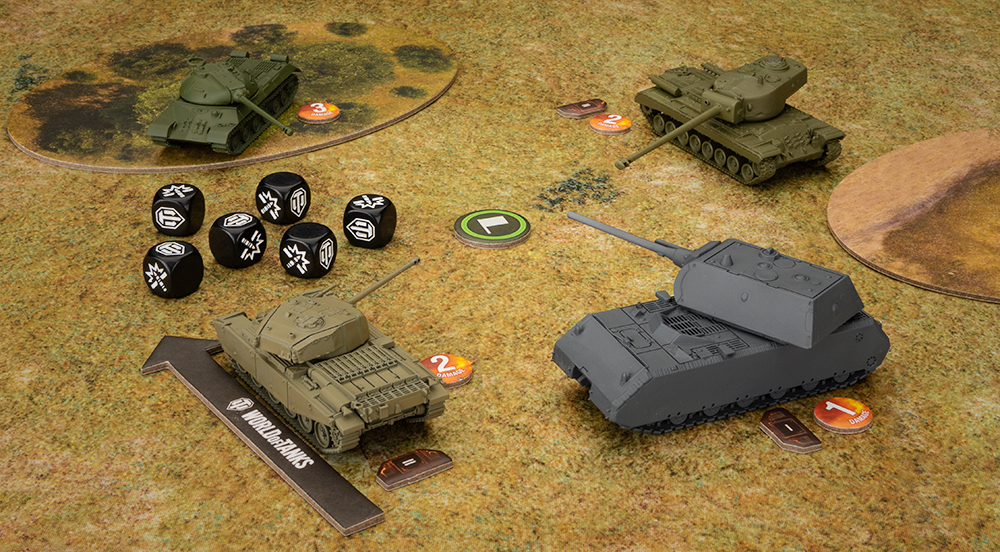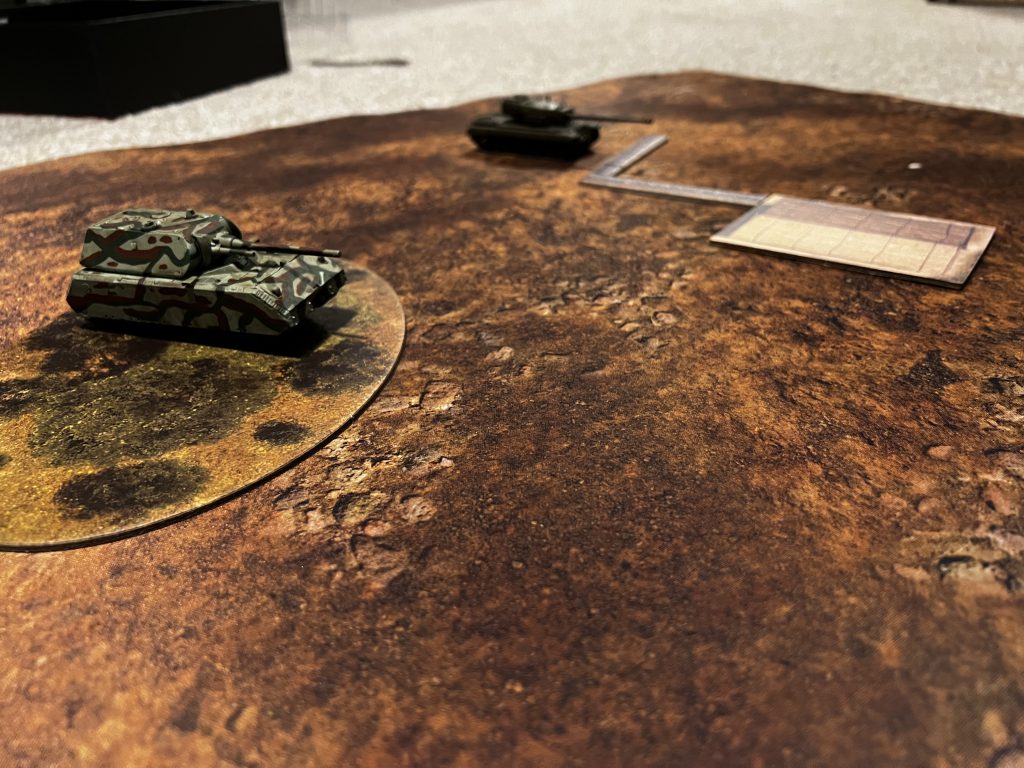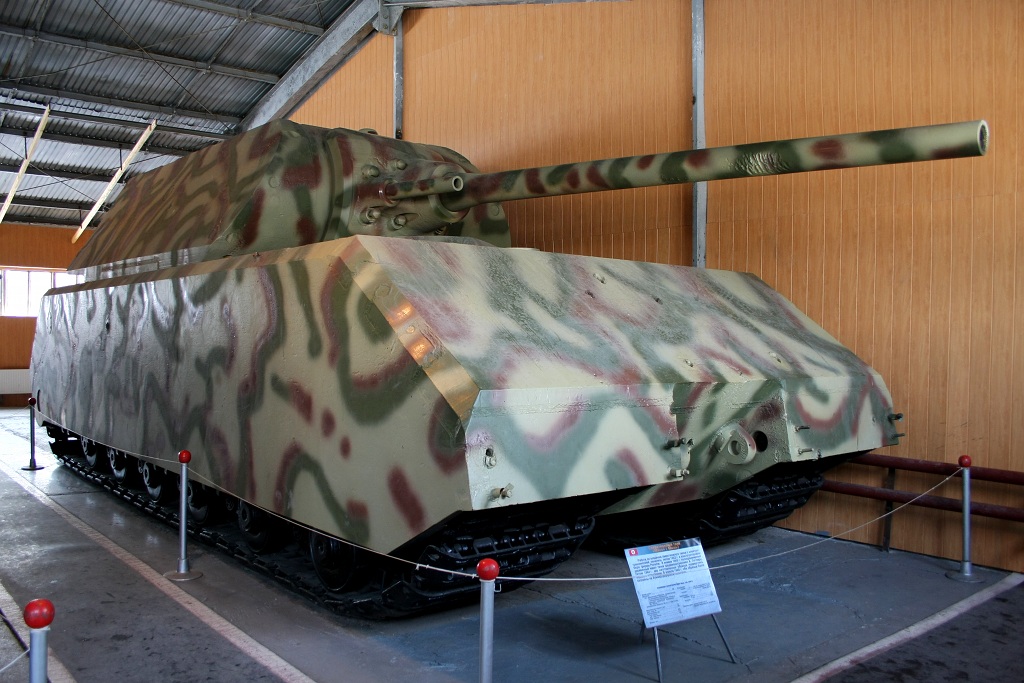Time for everyone to grab their tread grease and hearing protection, because we’re talking big tanks in a little game. This review was completed with a free copy of The World of Tanks Miniatures Game provided to us by Gale Force 9.
The Game
Overview:
Giving my readers a peek behind the curtain, I’m going to prattle on about how I like to review a game: I’m going to see what game designers and advertisers promise, and see how well it delivers. World of Tanks sets out to be a quick pick up and play game, the branding suggests it’s supposed to echo the video game, and the layout tells me it’s supposed to be a quick, almost arcade like experience. Let’s see if it matches that.

The Rulebook
Coming in at under 20 pages with lots of pictures and examples, the rule book is laid out very well. The rule book takes you through a game from deployment to movement to shooting to resolution, and then adds at the end how to build your tank platoon. A few sections feature rules that are a little verbose, almost to the point of over-clarification – especially the rules on defense rolls – but that’s hardly a complaint. The rule on Assault Guns (turretless armored fighting vehicles and tank destroyers) is a little clunky but the provided diagram clears it up.
The Stuff You Get
The game box comes with pretty much everything you need to play. You get cardboard punch outs for terrain: four houses, four walls, and two large terrain pieces for forests or hills (printed on each side). In short, hills can provide cover (extra defense dice). Forests are passable but keep you hidden whether you’re behind them or inside them, and cover if you’re only partially visible. Walls provide cover when you’re behind them, but are immediately destroyed upon being fired at. Houses are indestructible and provide cover or total line-of-sight blocking. This game uses true line of sight, and cover is determined by if the shooting tank can draw lines to three corners of an enemy tank’s hull.

The game also provides tread shaped cut outs labeled I, II, and III for movement. Movement is determined by 4” arrows. There’s no facing when it comes to movement, you place the base of the arrow anywhere on a tank’s hull, and you can move up the arrowhead for each “mobility” attribute your tank has. A tank with Mobility 3 can move 3 arrows, redirecting up to every 4 inches.
Deployment and Map Set Up:
Map setup is decided with an Advantage Roll. Advantage Rolls are featured at various points, mostly as Initiative Tie Breakers. They’re a little clunky: both players roll 3 dice, and success is determined by who rolls the most Criticals (sixes), and then if that’s tied, the most Hits (4s and 5s), and then a reroll.
Map set up is quick, and the rules are clear. It’s pretty easy to get relatively variable tables and scenarios each time you play.
Game play:
The game moves pretty fast, with activations decided by an advantage roll off, and then tank initiative. Whoever moves second shoots first, giving you time to think and line up shots.
Shooting is decided using the 6 World of Tanks dice: you roll the amount of dice in your tank’s pool, with the bullet icon being a hit, and the WoT symbol being a critical. The opponent then rolls defensive dice equal to their tank’s armor, and they can cancel critical hits with critical successes, and block regular hits with regular success. Heavy tanks have a rule where they make reroll a failed save. This makes games using this start box a bit of slug fest. Whenever a tank is reduced to 0 HP, it is out.
My favorite part of this game is the critical hit deck. Whenever you score a critical, you draw from the deck. This normally carries extra damage, but also other penalties. You may be unable to repair, you may be have your turret damaged, you may be slowed. It’s very fun, and the game’s repair mechanic means all matches aren’t simply ‘shoot and hope you roll well.’ Because of the quick pick up and replay nature of this system, I do wish it had one card in the deck that was an instant kill critical.

The History and the Models
The interesting thing about this box is that none of these tanks saw any real use in World War II, and two of them never saw any use ever.
Panzer VIII Maus

At risk of being the one to ‘hand it to the Nazis’, they did a good joke here by naming the biggest panzer not after a cat, but after mice. The Maus’ development lingered from 1942 until the fall of the Third Reich, and only two models were ever finished. After their capture by the Red Army, the hull of the first variant was combined with the turret of the second variant, leaving just one example of this behemoth in existence today. It sits at a Russian museum, and was painted in a very ugly fashion (more on this later.)
The Maus was famous for being too heavy to cross most contemporary bridges, though it did have a rather advanced snorkel system to overcome this handicap. It also was far too big for any engine and transmission the Nazis could put in it. If it had any advantages, it was the incredible amount of armor, and its massive 128mm main gun, which could kill almost any Allied tanks on either front with trivial ease at massive range. But, like the King Tiger, Jagdtiger, and other late war Nazi designs, it was neither properly powered, nor could it be produced.
The model copies the existing Maus variant well, with the weird exception of the connection point on the barrel, pictured below. I first assumed this was a left-over sprue piece, but all of these models seemed to be cleaned up of any mold lines. The treads are modeled with the ‘contact sprue’ and ‘connector link’ of the Maus’ suspension system. Overall, it’s not a very pretty tank to look at, and the model reflects that.
I decided to paint this model like the one surviving Maus. I’m not sure when the captured Maus was painted, and I don’t believe it’s painted to be an accurate reflection of German camouflage patterns during the war. It’s a pale green instead of Panzer yellow, and the brown and green lines are a different pattern than the German ‘ambush’ pattern. Honestly, the Soviet/Russian preservationists managed to make this big ugly beast even uglier. So, I had to paint it that way.
I started by basing the whole model in Pro Acryl Faded Green, and this proved to be a chore. Normally, Pro Acryl paints have amazing coverage, but this pigment did not cooperate. This took me about five layers over light gray primer. Following that, I did random blobs, lines, and dots of Pro Acryl Camo Green, and then smaller passes of the same with Pro Acryl Burnt Sienna. After that, I washed the model all over with Citadel Agrax Earthshade. The treads were painted with Vallejo Model Color Grey Black.

Readers, I’m gonna be honest. I think I nailed this ugly camo pattern, but it is an ugly camo pattern. I kind of hate how it looks, even though I think I executed it fairly well for the quick effort I wanted to put in. I’m also not sure it’s accurate, but who would I be to accuse the Russians about getting some facts about World War II wrong?
Game Play with the Maus:
This tank is quite hilariously overpowered compared to everything else in this box. It fires with SEVEN dice (note: this is one more dice than comes in the box), and its Big Gun rule lets it turn one hit into a critical. Its 128 cost is almost 5/8th of your ‘standard’ list, so against everything available in the game, it’s less scary. But with five games played with just the contents of this box, it’s the clear winner.

Centurion Mk I
The Centurion is a unique tank for its time because it was the first of the modern main battle tanks, and definitely one of the more successful tank designs of the post-war era. Many are still in service today.
Game Play with the Centurion Mk I:
As the only tank that isn’t a heavy tank in the box set, it’s the one tank that lets you actually maneuver as part of your strategy. That’s less of a commentary on the tank itself, and more that this box is a BIG TANK BOX.
T29 Heavy Tank
So, here’s a tank I’d never heard about until I grabbed this box set. The T29 was a U.S. experimental heavy tank that never saw service (the ‘T’ designator was for trial systems, ‘M’ would designate a system in service.). The project would evolve eventually into the American T34 heavy tank (no relation to the Soviet design), and the doctrinal evolution of the main battle tank would be realized by the Pentagon with the M48 Patton.
This model’s a pretty darn good representation of the T29, with the huge mantlet and incredibly long 105mm gun.
Game Play with the T29:
Box game come with big gun. I’ll have spoilers for the IS-3, folks: if you play the game with just these tanks, it becomes ‘who can shoot first and roll okay.’ All these tanks are slow with big fire power.
IS-3
Ahhhh the old soup bowl. This Soviet tank’s turret design is pretty iconic through the post-war era that would last until the T-64 design. This tank was produced too late for combat in World War II, but in time to arrive for the Berlin victory parade. Its combat debuts were in the brutal crackdown on the 1956 Hungarian Revolution, and it also saw use during Sino-Soviet border disputes, both sides of the 1967 Israel-Arab War, and in the brutal crackdown on the Prague Spring in 1968.
Ahhh the Warsaw Pact. A military alliance so defensive in nature, it only ever invaded its own members.
Game Play with the IS-3:
With nine games under my belt by the time I got to this one, five with the box set, four with other tanks, I can confirm the IS-3 is also a big tank. It is hard to kill, it punches holes in lighter tanks. It’s slow.
 A note on costs: after adding in a few more tanks into the last games I did before publishing this review, I think I can say that no tank feels too expensive or too cheap for the points system. I never went above a 250-point limit, though we did have some ~20 point gaps in our ‘list’ building. This is partly due to the small model count number of the game, but kudos to the designers on this.
A note on costs: after adding in a few more tanks into the last games I did before publishing this review, I think I can say that no tank feels too expensive or too cheap for the points system. I never went above a 250-point limit, though we did have some ~20 point gaps in our ‘list’ building. This is partly due to the small model count number of the game, but kudos to the designers on this.
The Platoon Blister Packs: Are They Worth Getting?
Okay, I’ll just lead with: if you are going to play a lot of this game, yes. If you are going to play this game a lot, they’re all good. And seemingly the only way to get the cards, so even if you have the models for Flames of War, you might need these cards.
It also needs said: these models are all really good, and they’re painted with a great base coat. My only complaint about it is that they don’t explicitly say what paint they use, but Vallejo Model Color is the paint partner.
Final Thoughts
I’m a man of few words. The game is fun, but maybe it’s not enough for gamers who want a deep and fulfilling game. I’d grab it as a way to get a friend into historicals if he likes the video game, or anything World War II.
As always, if you have any questions or suggestions, drop us a line at Contact@Goonhammer.com.


